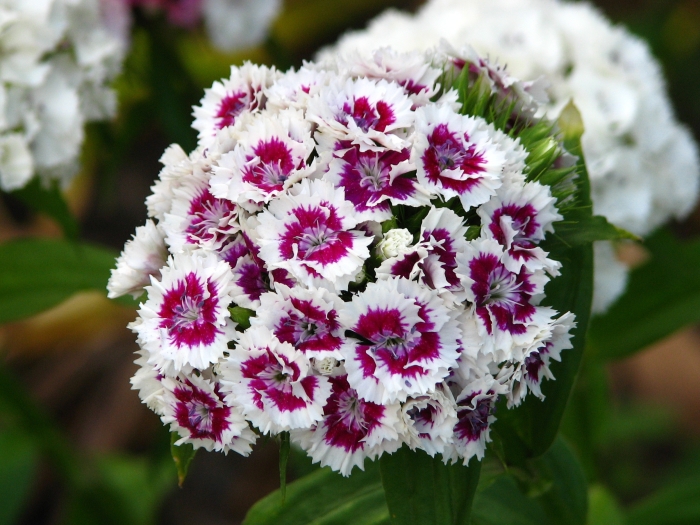Sweet William
(Dianthus barbatus)
Sweet William (Dianthus barbatus)
/
/

Kor!An (Андрей Корзун)
CC BY-SA 3.0





















































Estimated Native Range
Summary
Sweet William is valued for its vibrant flowers and ability to attract pollinators such as birds, bees, and butterflies, enhancing biodiversity in the garden. It is commonly used in borders, rock gardens, and informal country cottage gardens. Sweet William prefers loamy, slightly alkaline soil and can tolerate a range of light conditions from full sun to partial shade. It requires moderate watering and well-drained soil to thrive. Deadheading can promote further blooming, and while the plant is self-seeding, seeds from cultivars may not breed true. Propagation can be achieved through seed, cuttings, or division. Gardeners should be aware that Dianthus barbatus can become invasive outside its native range, so it is important to check local guidelines before planting.CC BY-SA 4.0
Plant Description
- Plant Type: Herb
- Height: 1-2 feet
- Width: 0.5-1 feet
- Growth Rate: Moderate
- Flower Color: Pink, Purple, Red, White
- Flowering Season: Spring, Summer
- Leaf Retention: Semi-deciduous
Growth Requirements
- Sun: Full Sun, Part Shade
- Water: Medium
- Drainage: Fast, Medium
Common Uses
Bee Garden, Bird Garden, Border Plant, Butterfly Garden, Deer Resistant, Drought Tolerant, Edible*Disclaimer: Easyscape's listed plant edibility is for informational use. Always verify the safety and proper identification of any plant before consumption., Fragrant, Groundcover, Hummingbird Garden, Low Maintenance, Potted Plant, Rabbit Resistant, Rock Garden, Salt Tolerant, Showy Flowers, Street Planting
Natural Habitat
Native to the grasslands and meadows of Southern Europe
Other Names
Common Names: Sweet-William , Bunch Pink , Bearded Pink , Sweet John , Studenter-Nellike , Bart-Nelke , Clavel Imperial , Harjaneilikka , Oeillet Barbu , Oeillet De Poète
Scientific Names: Dianthus barbatus , Dianthus barbatus var. barbatus , Dianthus barbatus var. latifolius , Dianthus barbatus var. paniculatus , Dianthus barbatus var. pedunculosus , Dianthus fimbriatus subsp. barbatus , Dianthus hispanicus , Diosanthos barbatum , Silene barbata
GBIF Accepted Name: Dianthus barbatus L.